As an Amazon Associate Playpedalsteel.com earns from qualifying purchases. This page contains affiliate links.
Right hand blocking for pedal steel guitar is a technique that helps a player clearly articulate the notes they pick. This is a challenging technique that calls for patience, but it’s not as hard as it seems!
What is Right Hand Blocking for Pedal Steel Guitar?
Picking notes on the pedal steel guitar requires you to use your right hand to block strings that aren’t intended to be heard. This is done by dampening or muting all the strings that aren’t being played at that time.
Blocking is similar to muting or dampening strings on a six-string guitar, except it is done with the picking hand. It is called right hand blocking because usually steel guitar players pick and block with their right hand.
The Purpose of Blocking
The pedal steel guitar constantly incorporates the use of a bar, and also utilizes glissandos and slides that are associated with moving it. You can block any strings that aren’t being played to prevent them from “ringing” out with unintended sounds and tonalities.
Right hand blocking can be very difficult at first, especially since the pedal steel guitar has at least 10 strings. However, usually only a couple or few of these strings are played at a time.
This technique enables a steel guitar player to selectively mute or play any string combination at any time.
Ways to Block
There are two common methods to right hand blocking: palm blocking, and pick blocking.
Numerous players have adopted both techniques (or a hybrid of both), since they both have been proven effective and have their own advantages.
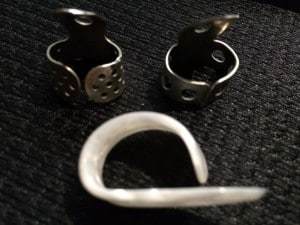
You can definitely use a hybrid of both to get through most playing situations.
Types of Blocking Techniques:
-Palm Blocking (more traditional)
-Pick Blocking (more modern)
-Hybrid of both (more evolutionary)
Try to block whatever strings need to be blocked in the most intuitive, efficient way possible.
This usually doesn’t involve thinking “should I be pick blocking here, or palm blocking?” It may be more helpful to ask “how can I block these strings, while still keeping my picking hand comfortable and relaxed?”
Having your right hand relaxed and in a good position will be very helpful. This can be challenging in the initial stages of learning pedal steel.
With practice, focus, and awareness right hand blocking can quickly become a natural part of your technique.
Beginner Ideas and Tips for Right Hand Blocking
Try to relax your right hand. If it tenses up and you notice it tensing, then breath deep and try to relax it.
Eventually you want it so relaxed, you don’t even notice it is there when picking. This means you are free to think about other things, and is a big step forward.
Your right hand can feel as relaxed as a guitar player’s does playing regular guitar…really they aren’t that different, except pedal steel is horizontal and guitar is vertical.
Also, be sure to practice blocking with single notes, two note groupings, and various chord grips. Try to cleanly block when doing any of these things!
Check to see if your bar is making any unwanted noise moving between frets or positions. If it is, try to identify where the sound is coming from, and how can you stop it.
It can be a good idea to start your practice session with single string picking exercises (using a metronome) Then try adding crossover techniques shortly after that.
Doing these things can help the right hand become more accurately “calibrated”, so you can focus on bar precision, or pedal work for the rest of the practice session.
Practicing Right Hand Blocking
There are various approaches to practicing right hand blocking on pedal steel. They all have their merits, and they all take time.
Below is a practice routine I’ve used often, which has helped me practice right hand blocking, and become more efficient in developing the technique.
It is comprehensive: it covers various areas of right hand blocking that, when combined, give the right hand more freedom to pick and block the strings it intends to.
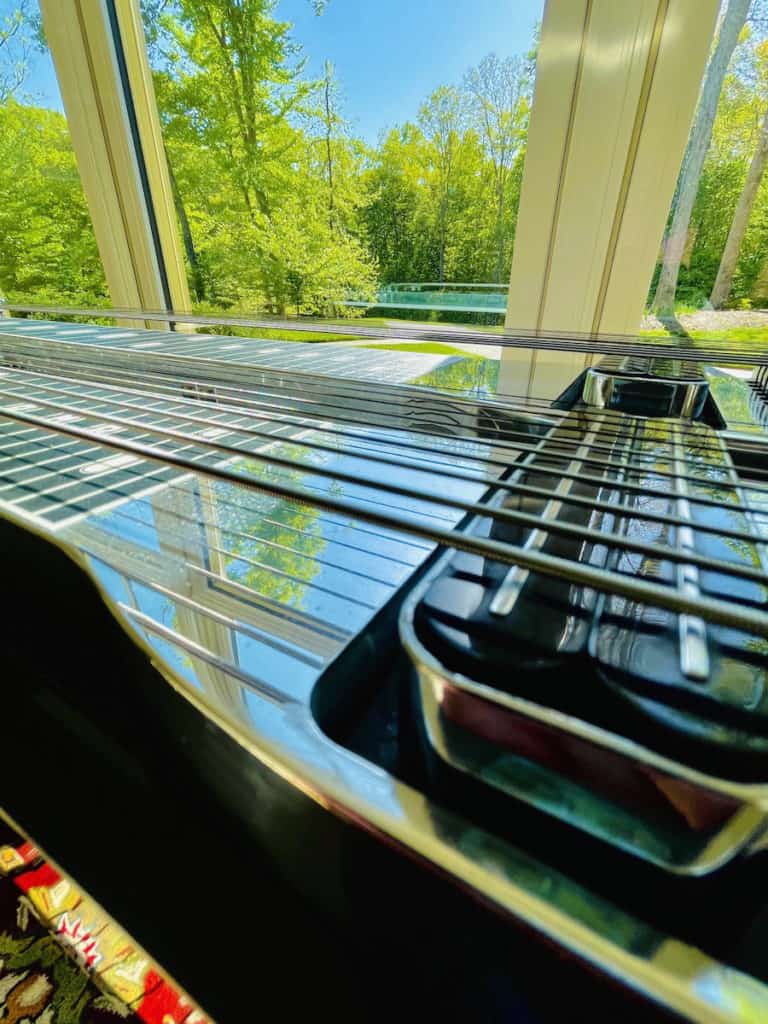
Some of the exercises in this routine are based off of exercises I’ve learned from great pedal steel guitarists over the years, more specifically Buddy Emmons and Joe Wright. This routine combines aspects of both of their technical styles.
Part 1 – 10 minutes
I usually begin with one two-string grouping, let’s say strings 6+5. I’ll have my middle finger on string 5, and my thumb on string 6.
I choose a place on the neck where these intervals relate to the tonic key or my practice drone (i.e. E9 neck – key of G, fret 3, strings 6+5. This sounds the 3rd and 5th intervals of the G major chord).
I stay on these two strings and relax, as I’m not going to skip to any other strings or groupings for 10 minutes or so. I fire up the metronome at a slow tempo, usually in the 60’s or low 70’s BPM.
NOTE: I usually only pick with these two fingers (more similar to palm blocking method), but if you want to utilize your index finger more, you can switch it out for the middle finger here and there and practice it the same way – you can also practice this with your middle finger on string 4 instead of 5, so you can rest your index finger on string 5 and be ready to pick it whenever – you are now in a three-string grouping. I digress.
Begin picking quarter notes along with the beats, while alternating various patterns between the fingers – use your imagination for combinations, but try to memorize them. Here’s a good starting point (T=thumb, M=middle finger):
TTMM means on beats 1(T), 2(T), 3(M), 4(M)
TMTM
MTMT
MMTT
MMMM
TTTT
There are vast combinations for these groupings. Add in a second measure and you’ll multiply your practice possibilities…
TTTT / MMMM
TTMT / MTMT
TMTM / TTMT
MMMT / TMMM
After a few minutes of trying to consistently line up these hits with my fingers, right on top of the beats from the metronome, I move on.
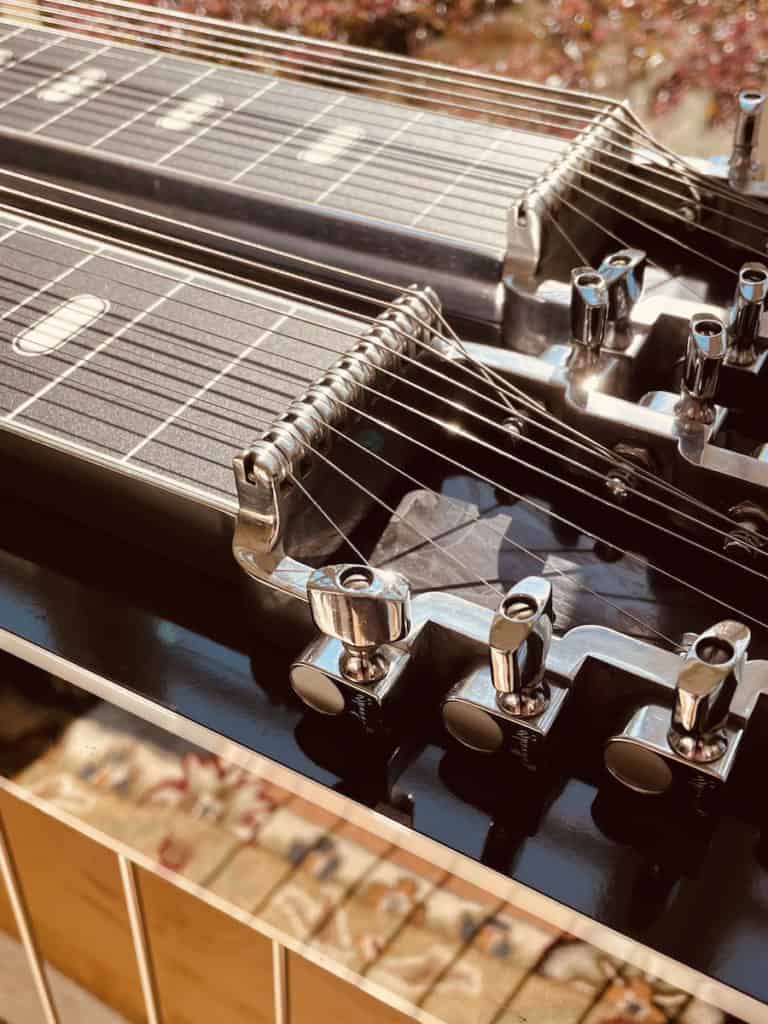
Next I try to double down: I play the same patterns I just played for the two measures, but as eighth notes to the same tempo I had going on the metronome just before.
You can swing these notes if you want to incorporate more swing/jazz tradition.
Now it’s like this if we count it out…
TTMMTTMM means 1(T) +(T) 2(M) +(M) 3(T) +(T) 4(M) +(M)
Try these patterns…
MTTMTTMM
TMTMMTMT
-I usually continue this practice until it has been ten minutes since I started the whole practice session.
If you’d like to add more to the routine, then continue for several more minutes using the various patterns above, but relate them to triplets and sixteenth notes.
This routine helps calibrate your fingers for attacking the strings, in a pocket, without skipping string groupings. Mentally, you can think of this as playing a two-string guitar and not thinking about anything else string-related.
Part 2 – 10 minutes
This routine helps calibrate your hand for skipping positions between string groupings.
For instance, if you want to play strings 4+3 at the fourth fret, then strings 6+5 at the fourth fret – your right hand has to skip a small amount to reach these with the fingers.
For more on this technique, visit Joe Wright’s videos on Sierra’s website. Joe Wright undoubtedly helped me with this routine. I learned a lot about the technique from him on these videos.
I turn my “harmonic ears” off the best I can for this routine, as there won’t be much harmony for this exercise unless you’re playing on the C6 neck. Or you can lower your E’s on the E9 neck and get away with it.
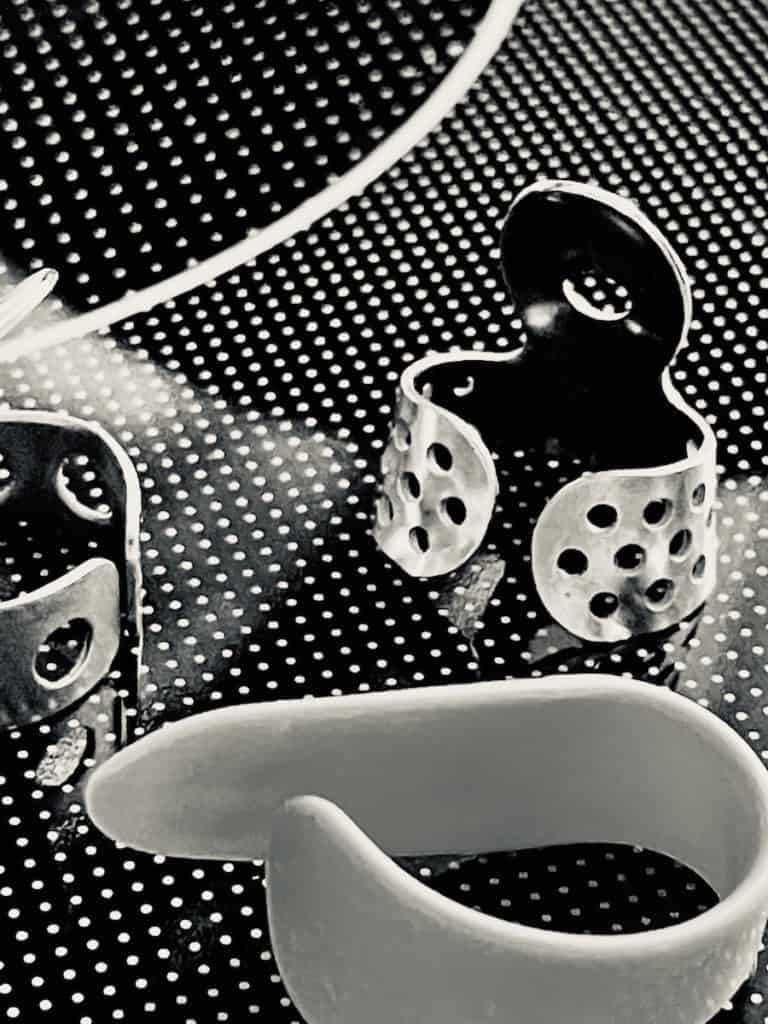
I start with the metronome slow again, usually between 55 and 85 BPM.
I am aiming to play notes on the quarter notes like last time, and then after five minutes I switch to eighth notes, just like last exercise.
I begin with a two string grouping (more palm blocking style) on the same two strings (6+5) and position my two fingers comfortably in this pocket again like they were in the last exercise.
I play these two strings (6+5) on beat 1, then skip to strings (5+4) for beat 2…skip to strings (4+3) for beat 3. Keep going until you reach the top of the strings (2+1).
Come back down the string groupings, still skipping one string at a time to the quarter notes, and keep going until you reach the bottom of the strings (10+9).
Keep doing this up and back for a few minutes, keeping in mind that your right hand’s fingers should feel like they can attack the strings at the same comfortable position you had them in Part 1’s exercise.
After a few minutes, do the same method, but skip two strings instead of one each time…
Strings 10+9 then…
8+7
6+5
4+3 continuing up and back the groupings landing on quarter notes. After a few minutes, switch to eighth notes if you’d like.
These two practice routines will do wonders for your right hand blocking technique. Practice them separately, and they will soak together nicely when you play later: helping you form better overall right hand technique.
Right Hand Blocking for Six-String Guitar Players
If you are a six-string guitar player, or come from that background, you actually have an advantage when learning right hand blocking.
It may seem the opposite: like trying to play the pedal steel is like trying to tackle a whole new beast, but really it’s not.
A pedal steel guitar is like an electric guitar that is played horizontally; like laying your electric guitar on your lap, and strumming parallel to the floor.
If you do this fingerstyle, and add a slide to your left hand, you are pretty much playing pedal steel guitar.
The only difference is, with pedal steel you add multiple elements to this playing, which occur simultaneously and can be physically challenging.
And you usually need to block or mute certain strings that aren’t being picked or played!
Thanks for checking out this page, hope it is helpful and makes playing more enjoyable! If you’re interested in diving deeper into playing E9 pedal steel, check out these resources and guides…
The Chord Guide for E9 Pedal Steel (E-Book, Digital Download)

Learn the chords on the E9 neck in a way that makes playing simple and enjoyable…
- Almost Every Chord You’ll Ever Need for E9
- Intuitive and Easy to Use
- Make Use of Pedal and Lever Combinations
- Example Tabs of Chord Movements
- Easily Utilize the Nashville Number System
- Great For Any Key and Style of Music
Includes a bonus section of over a hundred pages of extra chord charts, key references, and more!
Playing Pedal Steel:
The Essentials
An easy and intuitive approach to mastering the pedal steel…
- An in-depth look at bar control, the right hand, using pedals, & the volume pedal
- Multi Angle Views – that you can always reference.
- Ways to Practice, How to Practice, What to Practice.
An online pedal steel lesson series – includes a free pedal steel EBook!
More Digital Downloads for Pedal Steel…
The Scale Book for E9 Pedal Steel

Over 1,000 Pages with Tabs and Diagrams!
- Easy to Use Reference for Practicing
- All Major and Minor Pentatonic Scales, Modes, Major Scales
- All Keys, and Covers the Fretboard
- Includes Pockets of Scales
The Art of Right Hand Technique
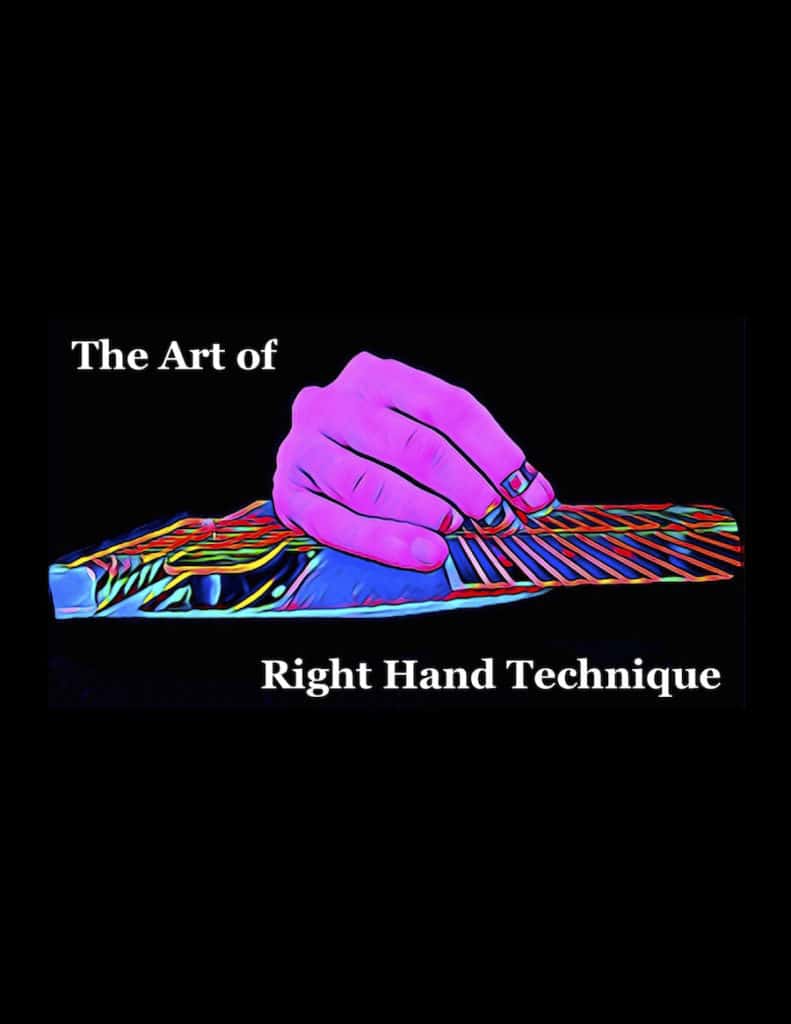
A detailed look at one of the most challenging and mysterious aspects of steel guitar playing: the right hand…
- An In-Depth Guide to Picking and Blocking
- How to Efficiently and Accurately Play Notes on Steel Guitar with Info, Advice, and Tips…
- Great for Pedal Steel, Lap Steel, and Console Steel Guitar
- Over 100 Pages with Graphics, Illustrations, & Practice Exercises
200 Country Riffs & Licks for E9 Pedal Steel
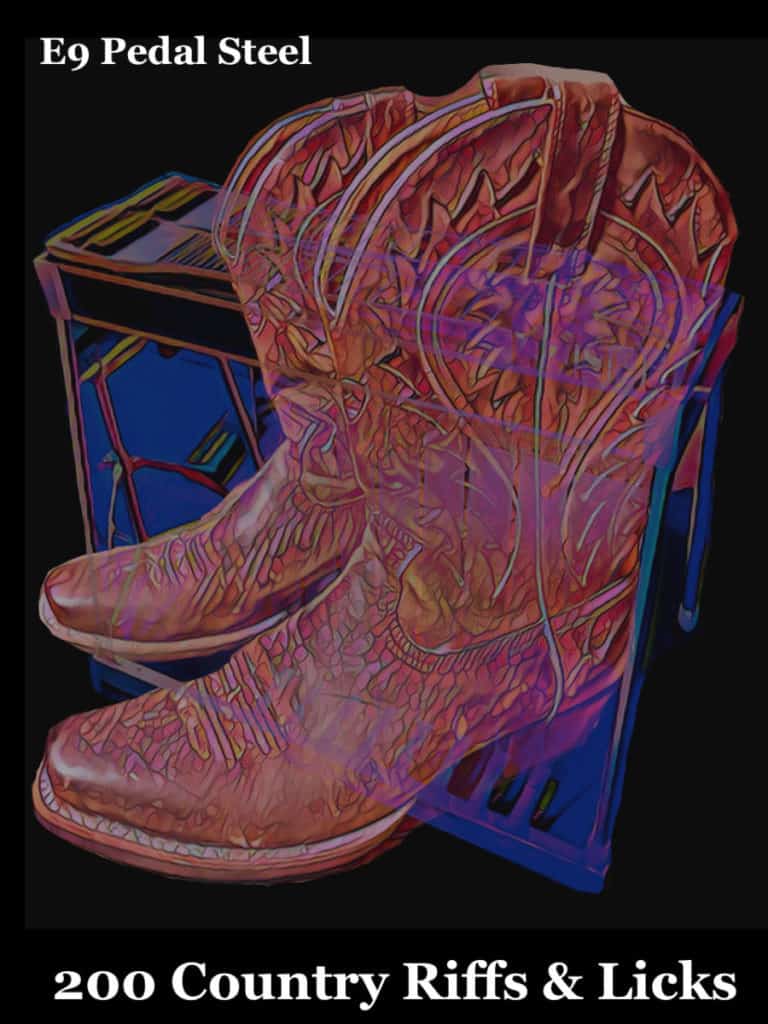
Add these country licks to your playing repertoire…
- Easy to Read Format
- Includes Rhythmic Notation
- Playing Over Chord Changes
- Great for Country, Alt-Country, & Honky-Tonk Styles
